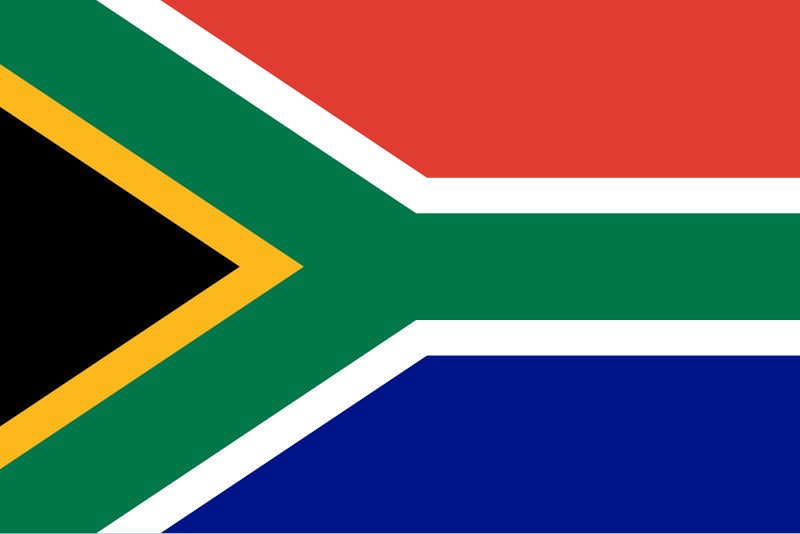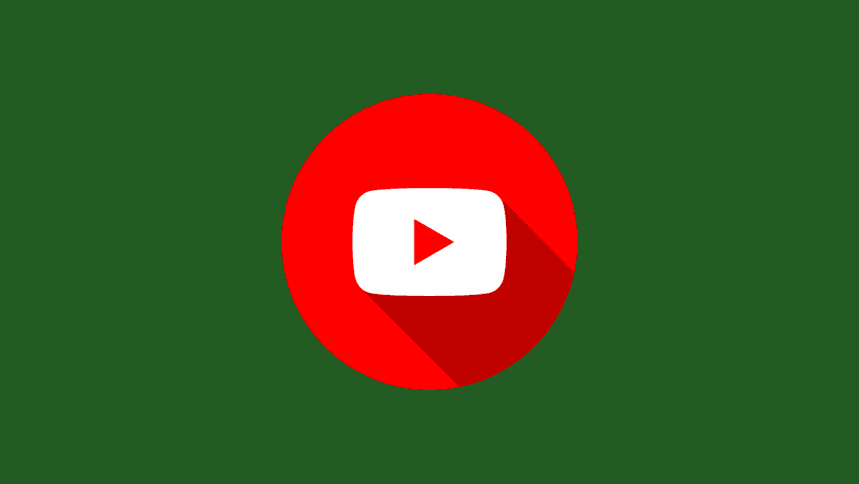
Unlocking YouTube Monetization for South African Creators
summary
YouTube Monetization in South Africa refers to the process by which South African content creators earn income through the YouTube platform by meeting specific eligibility criteria and adhering to its policies. As part of the YouTube Partner Program (YPP), creators can monetize their content through advertising, sponsorships, and other revenue streams such as channel memberships, Super Chat, and merchandise sales. To qualify, creators must accumulate at least 1,000 subscribers and 4,000 watch hours within 12 months, or 1,000 subscribers and 10 million Shorts views in 90 days, while complying with YouTube's Advertiser-Friendly Content Guidelines[1][2].
YouTube monetization has become a significant economic opportunity for South African creators, enabling them to build sustainable careers and reach global audiences. However, challenges such as lower cost per mille (CPM) rates in local markets, averaging around $2.26, and disparities in internet access and affordability can limit earnings potential[3][4]. Despite these hurdles, creators focusing on international topics or leveraging alternative income streams like affiliate marketing and digital product sales often achieve higher revenue[5][6].
The platform has played a transformative role in South Africa's digital economy, which is projected to reach $180 billion by 2025[7]. By providing tools for content creation and monetization, YouTube has empowered a new generation of entrepreneurs, artists, and educators to amplify their voices and ideas globally[8]. However, creators must navigate legal and regulatory considerations, including tax obligations and compliance with both YouTube's policies and South African laws[9].
As the digital landscape evolves, emerging trends such as the growth of financial technology (FinTech) and increased mobile connectivity are expected to further expand opportunities for South African YouTubers, solidifying YouTube's role as a key driver of economic and creative growth in the region[10][11].
Overview
YouTube monetization in South Africa has become a significant avenue for content creators to generate income through various revenue streams, including advertising, partnerships, and participation in the YouTube Partner Program (YPP). The platform offers South African YouTubers the opportunity to earn from their content by meeting specific eligibility criteria, such as accumulating 1,000 subscribers and 4,000 watch hours within the past 12 months, or achieving 1,000 subscribers and 10 million Shorts views in 90 days[1].
The monetization process involves adhering to YouTube's Advertiser-Friendly Content Guidelines, which ensure that content aligns with advertiser preferences. Even if a creator is part of the YPP, not all videos may be eligible for ads if they violate these guidelines[1]. This system aims to maintain a high standard of content quality while preventing spammers and bad actors from exploiting the platform[1].
South African creators often face unique challenges, such as lower ad spending in local markets compared to Western countries. This can result in lower CPM (cost per mille or cost per 1,000 impressions) for content targeting primarily South African audiences. However, creators focusing on international topics, such as investment tips, cryptocurrency, or home loans, may attract higher-paying ads due to a more global viewership[2].
To maximize revenue, South African YouTubers are encouraged to produce high-quality content that increases watch time and attracts more viewers, thereby enhancing ad revenue potential[3]. Additionally, resources like the GSMA's report on digital transformation highlight the role of mobile technology in expanding opportunities for creators in South Africa[4].
History of YouTube Monetization in South Africa
The history of YouTube monetization in South Africa reflects the broader evolution of the digital economy on the continent. As internet connectivity improved and mobile technology became more accessible, South Africa emerged as a key player in Africa's digital transformation, paving the way for content creators to explore monetization opportunities on platforms like YouTube[5][6].
In the early days of YouTube, South African creators faced significant challenges, including limited access to high-speed internet and a lack of awareness about monetization tools. However, as the platform grew globally, YouTube introduced the YouTube Partner Program (YPP), which allowed creators to earn revenue through advertising, sponsorships, and other income streams. This program became a game-changer for South African YouTubers, enabling them to turn their passion for content creation into viable careers[3][7].
The rise of South Africa's digital economy, driven by increased connectivity and the adoption of emerging technologies like AI and blockchain, further bolstered the potential for YouTube monetization[6]. By the mid-2010s, South African creators began to gain traction, with some achieving significant success in niches like finance, technology, and entertainment. These creators often attracted international audiences, which typically resulted in higher CPMs (cost per mille) compared to local audiences[2][8].
The launch of initiatives like the South African Digital Economy Report highlighted the role of digital platforms in driving economic growth and creating opportunities for entrepreneurs and artists[5]. By the late 2010s, YouTube had become a transformative force for South African creators, offering them a platform to amplify their voices and ideas beyond local boundaries[9].
Today, South Africa's YouTube landscape is thriving, with top creators earning substantial incomes ranging from R1,826 to over R1.4 million per month, depending on their niche and audience reach[8][10]. Despite challenges such as lower ad spending in local markets and trade barriers affecting digital trade, South African YouTubers continue to innovate, leveraging social media and high-quality content to grow their channels and maximize revenue[3][7]. The platform's role in South Africa's digital economy is expected to expand further, with Africa's digital economy projected to reach $180 billion by 2025[9].
Monetization Requirements
To monetize a YouTube channel in South Africa, creators must meet specific eligibility criteria set by the YouTube Partner Program (YPP). These requirements are designed to ensure that channels adhere to YouTube's policies and guidelines while maintaining a standard of quality and engagement[11][12].
YouTube Partner Program (YPP) Eligibility
The primary pathway to monetization on YouTube is through the YouTube Partner Program.
-
Subscriber and Watch Hour Thresholds: Creators must have at least 1,000 subscribers and 4,000 valid public watch hours over the last 12 months[3][13]. These thresholds ensure that channels have a consistent and engaged audience before they can start earning revenue.
-
Adherence to YouTube Policies: Channels must comply with all of YouTube's policies, including the Advertiser-Friendly Content Guidelines. This ensures that the content is suitable for advertisers and aligns with YouTube's community standards[12][1].
-
Location Eligibility: Creators must reside in a country where the YouTube Partner Program is available. South Africa is among the eligible countries, allowing local creators to participate in the program[13][14].
-
Google AdSense Account: To receive payments, creators must link an active Google AdSense account to their YouTube channel. This account is used to manage earnings and facilitate payouts[12][15].
Application and Review Process
Once the eligibility requirements are met, creators can apply for the YouTube Partner Program through their YouTube Studio account. YouTube will then review the channel to ensure compliance with its guidelines and policies. This review process includes an assessment of the channel's content, watch hours, and adherence to YouTube's monetization policies[16][15].
Additional Monetization Opportunities
Beyond traditional ad revenue, South African creators can explore alternative monetization methods, such as channel memberships, Super Chat, and merchandise sales. These options provide additional revenue streams and allow creators to diversify their income[17][18].
Recent Updates and Changes
YouTube has periodically updated its monetization policies to improve the platform's ecosystem. For instance, the platform has introduced stricter requirements to prevent spammers and bad actors from exploiting the system. Additionally, YouTube has expanded access to certain monetization features for smaller creators, such as tipping and shopping features, while maintaining the existing YPP requirements for ad revenue sharing[1][18].
By meeting these requirements and staying informed about policy updates, South African creators can effectively monetize their content and build sustainable careers on YouTube.
Revenue Streams for South African Creators
South African YouTubers have access to a variety of revenue streams beyond traditional ad revenue, enabling them to diversify their income and maximize earnings. The primary method of monetization is through the YouTube Partner Program (YPP), which allows creators to earn money from ads displayed before, during, or after their videos. The revenue split for standard videos is typically 55% for creators and 45% for YouTube, while Shorts creators retain 45% of the revenue generated[19][20][21].
In addition to ad revenue, South African creators can explore alternative income sources such as affiliate marketing, sponsored content, and selling digital products like e-books or online courses[16][22]. These methods not only provide additional revenue but also allow creators to engage more deeply with their audience and share expertise in their niche. For example, creators focusing on finance, real estate, or technology often attract higher-paying ads and can leverage their expertise to sell courses or consulting services[2][8].
Another growing revenue stream is branded merchandise, where creators design and sell their own products to fans. Additionally, channel memberships and super chats during live streams offer direct support from viewers, further supplementing income[17].
The CPM (cost per mille) and RPM (revenue per mille) metrics are critical in understanding earnings potential. In South Africa, the average CPM ranges from R8.50 to R53.79, depending on the niche, with top creators earning between R1,826 and R1,402,918 per month[2][8][23]. Creators with international audiences often benefit from higher CPMs compared to those targeting local markets, where ad spending is generally lower[2][24].
Challenges Faced by South African Creators
While YouTube offers significant opportunities for South African creators to monetize their content and reach a global audience, several challenges hinder their ability to fully capitalize on these opportunities. One of the primary obstacles is the relatively low CPM (cost per mille) rates in South Africa, which average around $2.26. This means creators earn approximately R270 for every 1,000 ad views, a rate significantly lower than in many other regions[23][24]. As a result, many creators must supplement their ad revenue with additional income streams, such as sponsorships, merchandise sales, or affiliate marketing, to achieve financial sustainability[2].
Another challenge is the stringent eligibility requirements for the YouTube Partner Program (YPP), which requires creators to have at least 1,000 subscribers and 4,000 watch hours in the previous year to qualify for monetization[13][3]. Although YouTube has recently expanded its YPP to include smaller creators, allowing them to access features like Super Chats and channel memberships, full ad revenue sharing still requires meeting the original criteria[25][18]. This creates a barrier for emerging creators who may struggle to build a substantial audience quickly.
Additionally, South Africa's digital economy, while growing, still faces infrastructural and economic limitations. Rapid digital transformation is reshaping the country, but disparities in internet access and affordability can limit the reach and impact of content creators[26][5]. Furthermore, the competitive nature of the platform means that creators must consistently produce high-quality, engaging content to stand out, which can be resource-intensive[27][28].
Despite these challenges, South African creators continue to innovate and adapt, leveraging platforms like YouTube to amplify their voices and build sustainable careers in the digital economy[29][9].
Impact on the Creative Economy
YouTube has emerged as a transformative force in South Africa's creative economy, empowering a new generation of entrepreneurs, artists, and educators to amplify their voices and ideas on a global scale[9][30]. The platform has become a cornerstone of the content creator economy, enabling individuals to produce, share, and monetize digital content while fostering innovation and cultural exchange[28].
Economic Opportunities for Creators
YouTube offers South African creators a dynamic platform to monetize their content and build sustainable income streams[31]. Through diverse monetization options such as ad revenue, sponsorships, and merchandise sales, creators can tailor their strategies to align with their content style and audience preferences[31]. For example, South African YouTubers like Pap Culture have leveraged the platform to address pressing social issues, such as xenophobia, while celebrating traditional culture, demonstrating the platform's potential to drive meaningful conversations and cultural preservation[32].
Driving Digital Transformation
The growth of YouTube's creative economy aligns with broader trends in South Africa's digital transformation, which is reshaping how individuals learn, work, trade, and access information[26]. Increased connectivity, the rise of e-commerce, and the adoption of emerging technologies like Artificial Intelligence (AI) and Cloud Computing have further accelerated this transformation[6]. YouTube's role in this ecosystem is pivotal, as it provides creators with the tools and reach to tap into global markets, thereby contributing to the country's digital economy, which is projected to reach $180 billion by 2025[9][5].
Challenges and Opportunities
Despite its potential, South Africa's digital economy faces trade barriers such as data localization, technology restrictions, and internet service limitations, which can impact the growth of digital trade and content creation[6]. However, the growing financial technology (FinTech) sector presents opportunities for creators and businesses to explore innovative partnerships and investments in digital payment solutions, further enhancing the monetization potential for South African YouTubers[6].
Success Stories
South African YouTubers have carved out a niche in the global digital landscape, showcasing the country's vibrant culture while building lucrative careers. These creators have successfully monetized their channels by leveraging unique strategies, engaging content, and a deep understanding of their audience.
Top South African YouTubers
Some of the most successful South African YouTubers include Mihlali Ndamase, Dxwxt, Samuperty, and The Buddymoon. Mihlali Ndamase, for instance, has amassed over 1.38 million subscribers and 293 million views, making her a leading figure in South African pop culture and beauty content[33]. Similarly, creators like Dxwxt and Samuperty have gained massive followings by focusing on lifestyle, fashion, and travel, engaging millions of viewers with their authentic and relatable content[34].
Monetization Strategies
These creators have utilized a variety of monetization strategies, including traditional ad revenue, brand collaborations, and merchandise sales. For example, many South African YouTubers have turned their personal experiences and challenges into "content goldmines," attracting sponsorships and partnerships[35]. Additionally, some have adopted the "Education Stack Strategy," which involves creating educational content that appeals to a broad audience while maintaining high engagement levels[35].
Overcoming Challenges
Despite YouTube's stricter monetization requirements, such as meeting eligibility thresholds and adhering to Advertiser-Friendly Content Guidelines, South African creators have thrived by producing high-quality, compliant content[1]. This has allowed them to access YouTube's monetization products, including ad revenue and memberships, further boosting their income[17].
Real-World Impact
The success of these YouTubers has not only provided them with financial stability but has also inspired a new generation of South African creators. By sharing their stories and perspectives, they have opened doors for others to follow in their footsteps, proving that YouTube can be a viable career path in South Africa[36][37].
These success stories highlight the potential of YouTube as a platform for both creative expression and financial growth, offering a blueprint for aspiring creators in South Africa and beyond.
Legal and Regulatory Considerations
YouTube monetization in South Africa is governed by a combination of YouTube's global policies and local legal and regulatory frameworks. Creators must adhere to YouTube's Advertiser-Friendly Content Guidelines, which determine whether a video is eligible for ad monetization. If a video is flagged as non-compliant, it may have limited or no ads displayed, even if the creator is part of the YouTube Partner Program (YPP)[1]. Additionally, creators must ensure their content complies with South Africa's laws, including those related to copyright, defamation, and hate speech.
To join the YPP, creators must meet specific eligibility criteria, including having more than 1,000 subscribers and adhering to YouTube's policies[12]. South Africa is included in the list of countries eligible for the YPP, allowing local creators to monetize their content through ads, channel memberships, tipping, and shopping features[18][12]. However, creators should be aware of the revenue split, which defaults to 55% for creators and 45% for YouTube[20]. This split applies to ad revenue generated from views on their videos.
Creators in South Africa are paid in South African Rand (ZAR), which has raised concerns about the currency's lower value compared to the US dollar. For every Rand earned, creators receive approximately $0.069, which some have criticized as exploitative[38]. Despite this, South Africa remains one of the top monetization countries for YouTube content globally[39].
It is also important for creators to stay updated on changes to YouTube's policies and monetization features. For example, YouTube has recently lowered eligibility requirements for certain monetization methods, such as paid chat and tipping, but stricter thresholds remain for ad revenue sharing[18][40]. Creators must sign necessary agreements and comply with all guidelines to avoid being removed from the YPP[40].
Finally, South African creators should be mindful of tax obligations. Earnings from YouTube are considered taxable income, and creators may need to register with the South African Revenue Service (SARS) and declare their earnings. Failure to comply with tax regulations could result in penalties or legal issues. By adhering to both YouTube's policies and South Africa's legal requirements, creators can successfully monetize their content while avoiding potential pitfalls.
Future Trends and Opportunities
The digital economy in South Africa is undergoing rapid transformation, with YouTube playing a pivotal role in shaping future opportunities for content creators and entrepreneurs. As Africa's digital economy is projected to reach $180 billion by 2025, YouTube's influence in creating economic opportunities is expected to grow significantly[9]. This growth is driven by increased connectivity, the rise of digital services, and the adoption of emerging technologies like Artificial Intelligence (AI) and Cloud Computing[6].
For South African creators, YouTube offers a dynamic platform to monetize content and build sustainable incomes through advertising, partnerships, and participation in the YouTube Partner Program[3][27]. The platform's global reach allows creators to tap into international audiences, which can result in higher CPMs (cost per mille) for content focused on topics like investment tips, cryptocurrency, or home loans[2]. However, creators focusing on local issues or entertainment may face challenges due to lower ad spending in South Africa compared to Western markets[2].
Emerging trends suggest that the financial technology (FinTech) sector, including digital payment solutions and internet banking, will provide new avenues for collaboration and investment, potentially benefiting YouTube creators who integrate these technologies into their monetization strategies[6]. Additionally, the rise of e-commerce and digital products, such as e-books and online courses, presents opportunities for creators to diversify their revenue streams beyond traditional ad-based income[22].
As mobile technology continues to drive digital transformation in South Africa, the accessibility of YouTube and other digital platforms is expected to expand, enabling more individuals to participate in the digital economy[5]. This shift will likely amplify the voices of African entrepreneurs, artists, and educators, further solidifying YouTube's role as a transformative force in the region[9].


